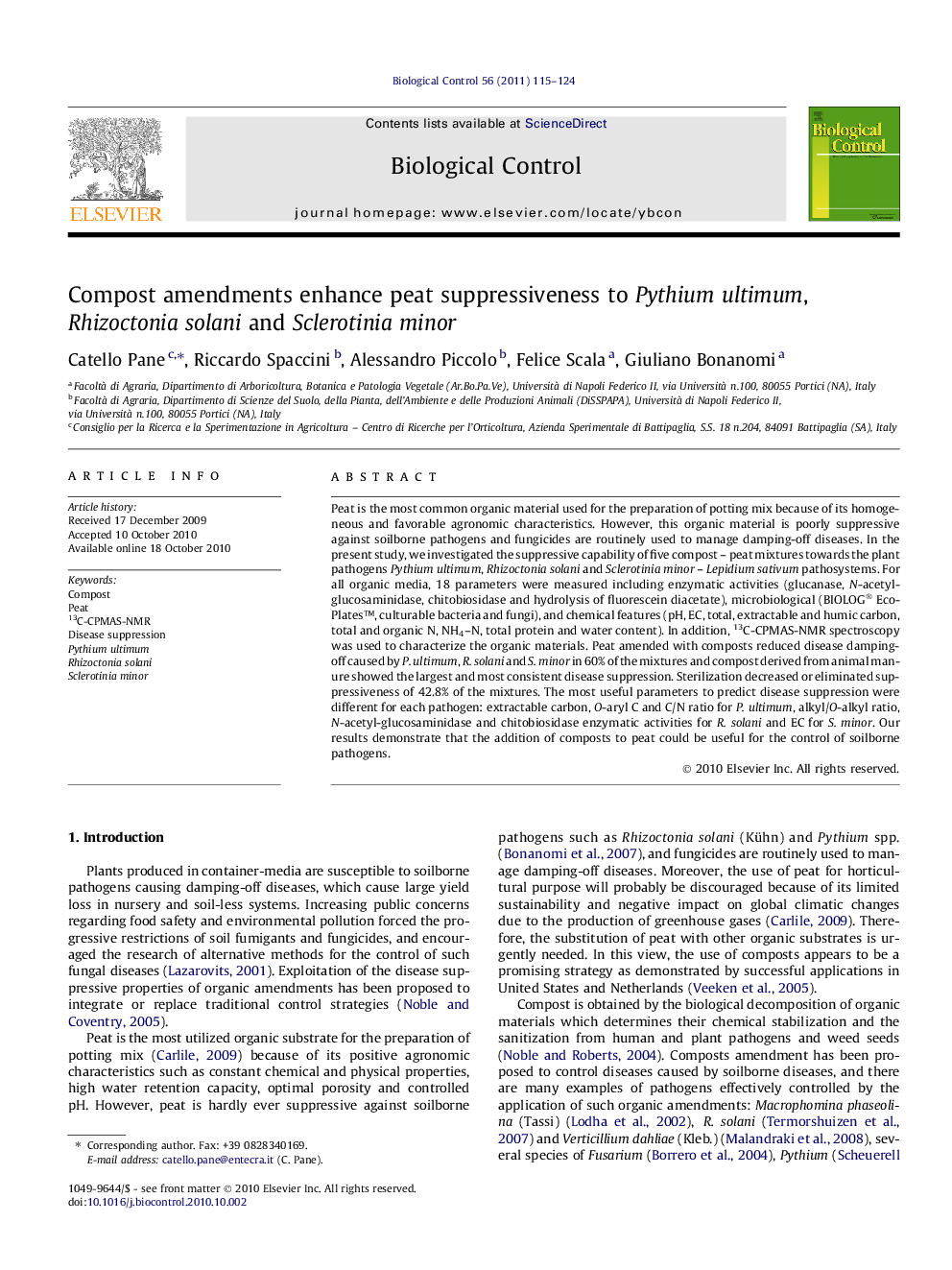| کد مقاله | کد نشریه | سال انتشار | مقاله انگلیسی | نسخه تمام متن |
|---|---|---|---|---|
| 4504362 | 1321088 | 2011 | 10 صفحه PDF | دانلود رایگان |

Peat is the most common organic material used for the preparation of potting mix because of its homogeneous and favorable agronomic characteristics. However, this organic material is poorly suppressive against soilborne pathogens and fungicides are routinely used to manage damping-off diseases. In the present study, we investigated the suppressive capability of five compost – peat mixtures towards the plant pathogens Pythium ultimum, Rhizoctonia solani and Sclerotinia minor – Lepidium sativum pathosystems. For all organic media, 18 parameters were measured including enzymatic activities (glucanase, N-acetyl-glucosaminidase, chitobiosidase and hydrolysis of fluorescein diacetate), microbiological (BIOLOG® EcoPlates™, culturable bacteria and fungi), and chemical features (pH, EC, total, extractable and humic carbon, total and organic N, NH4–N, total protein and water content). In addition, 13C-CPMAS-NMR spectroscopy was used to characterize the organic materials. Peat amended with composts reduced disease damping-off caused by P. ultimum, R. solani and S. minor in 60% of the mixtures and compost derived from animal manure showed the largest and most consistent disease suppression. Sterilization decreased or eliminated suppressiveness of 42.8% of the mixtures. The most useful parameters to predict disease suppression were different for each pathogen: extractable carbon, O-aryl C and C/N ratio for P. ultimum, alkyl/O-alkyl ratio, N-acetyl-glucosaminidase and chitobiosidase enzymatic activities for R. solani and EC for S. minor. Our results demonstrate that the addition of composts to peat could be useful for the control of soilborne pathogens.
Compost addition to peat (open bars; C1–C5) reduces Lepidium sativum damping-off incidence caused by three different pathogens compared to non-amended peats (dark grey bars; P1 and P2). Chemical characteristics of organic materials are assessed by 13C-CPMAS-NMR (right).Figure optionsDownload as PowerPoint slideResearch highlights
► Peat amended with composts reduced Pythium, Rhizoctonia and Sclerotinia damping-off.
► Sterilization decreased suppressiveness of 9 out of 21 composts.
► Pythium suppression was related to extractable C, O-aryl C and C/N ratio.
► R. solani and S. minor suppression was related to alkyl C/O-alkyl C ratio and EC.
► Compost addition to peat can control soilborne pathogens.
Journal: Biological Control - Volume 56, Issue 2, February 2011, Pages 115–124